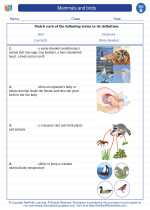Fluoroquinolones
Fluoroquinolones are a class of antibiotics that are used to treat various bacterial infections.
How do fluoroquinolones work?
Fluoroquinolones work by inhibiting the enzymes that are essential for bacterial DNA replication, transcription, repair, and recombination. By interfering with these processes, fluoroquinolones prevent the bacteria from multiplying and spreading.
Common uses of fluoroquinolones
- Treating urinary tract infections
- Respiratory tract infections
- Skin and soft tissue infections
- Gastrointestinal infections
- Sinus infections
Possible side effects
While fluoroquinolones are effective in treating bacterial infections, they can also cause some side effects such as:
- Nausea and vomiting
- Diarrhea
- Dizziness
- Headache
- Photosensitivity (increased sensitivity to sunlight)
- Tendonitis and tendon rupture (rare but serious)
Precautions
It is important to use fluoroquinolones only as prescribed by a healthcare professional. It is also essential to complete the full course of antibiotics as directed, even if symptoms improve before the medication is finished. Additionally, fluoroquinolones should be used with caution in children, pregnant women, and individuals with a history of tendon disorders.
Study Guide
Here are some key points to remember about fluoroquinolones:
- Fluoroquinolones are a class of antibiotics used to treat bacterial infections.
- They work by inhibiting bacterial DNA replication, transcription, repair, and recombination.
- Common uses include treating urinary tract infections, respiratory tract infections, skin and soft tissue infections, gastrointestinal infections, and sinus infections.
- Possible side effects include nausea, vomiting, diarrhea, dizziness, headache, photosensitivity, and rare but serious tendonitis and tendon rupture.
- Precautions include using the medication only as prescribed, completing the full course of antibiotics, and using caution in certain populations.
◂Science Worksheets and Study Guides Second Grade. Mammals and birds

 Activity Lesson
Activity Lesson
 Worksheet/Answer key
Worksheet/Answer key
 Worksheet/Answer key
Worksheet/Answer key
 Worksheet/Answer key
Worksheet/Answer key
 Worksheet/Answer key
Worksheet/Answer key
 Vocabulary/Answer key
Vocabulary/Answer key
